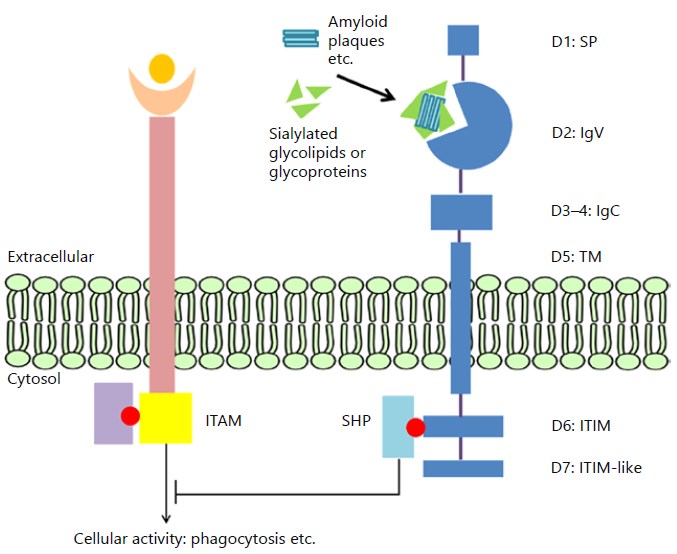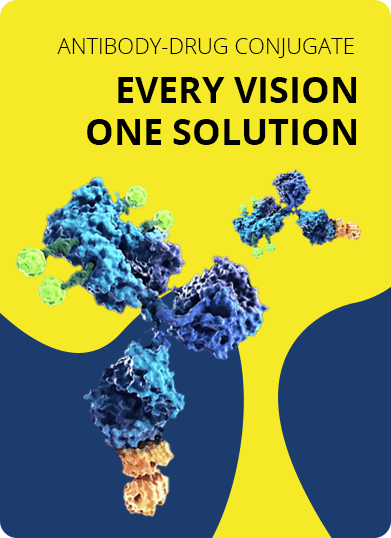- Home
- UTC Development
- Bispecific ADC Development
- Fast-internalizing Receptor based Bispecific ADC Development
- CD33 based Bispecific ADC Development
CD33 based Bispecific ADC Development Service
Bispecific antibody-drug conjugates (ADCs) represent an innovative and promising therapeutic agent owing to the advantages of the high specific anti-tumor activity. As a global service provider in the field of ADCs design and development, Creative Biolabs has world-class facilities and experienced team to offer integrated services for the development of bispecific ADCs. Our end-to-end services include the production of bispecific antibody, the synthesis of high quality linker-paylaods as well as effective conjugation.
The Overview of CD33
The CD33 gene maps on chromosome 19q13.33 in humans encoding a 67-kDa transmembrane glycoprotein. In mammals, CD33 is expressed on hematopoietic and phagocytic cells, including hematopoietic progenitors, myelomonocytic precursors, macrophages, monocytes, dendritic cells, and microglial cells. CD33 belongs to the sialic acid-binding Ig-like lectins (Siglecs) family. Human CD33 binds preferentially to alpha-2,6-linked sialic acid at μM to mM potency. The active site of CD33 contains a conserved arginine residue which is positively charged at physiological pH. Since sialic acids are typically terminal on glycoconjugates, the positively charged arginine forms salt bridges with the sialic acid of sugar residues, enabling a stable interaction.
CD33 is a type I transmembrane protein with its N-terminus in the extracellular space and the C-terminus in the cytosol. CD33 is a member of the Ig superfamily and thus has Ig domains and the structure of Ig fold. The CD33 gene comprises seven coding exons, which can be described from the extracellular to the cytosol as follows:
- Exon 1 encodes an 18-amino-acid signaling peptide (SP, aa1-18) followed by a 31-amino-acid peptide and a premature stop codon.
- Exon 2 encodes the canonical Ig-like V-type (IgV) domain (aa19-135), which is the binding site of sialic acid-containing ligands and is considered as the functional domain of CD33. A splice variant short of exon 2 results in an inactive isoform (D2-CD33).
- Exons 3 and 4 encode a C2-type Ig repeat structural domain (C2-Ig domain, aa145-228). CD33 contains only one C2-Ig domain and is the shortest Siglec family member.
- Exon 5 encodes a transmembrane domain (aa260-282).
- Exons 6 and 7 encode two cytosolic immunotyrosine inhibitory motifs (ITIMs): a membrane-proximal ITIM (aa338-343) and a membrane-distal ITIM-like motif (aa356-361). The ITIM is the main domain for inhibitory signal transduction in the cell. The ITIM-like motif may be involved in immunoreceptor tyrosine-based inhibitory signaling.
 Fig.1 Schematic depiction of CD33 exon structure and its inhibitory mechanism. (Zhao, 2018)
Fig.1 Schematic depiction of CD33 exon structure and its inhibitory mechanism. (Zhao, 2018)
Antibodies-based Therapeutics targeting CD33
CD33 antibodies offer novel means to target cell surface CD33 with high specificity and efficacy. CD33 antibodies lower CD33 protein levels mostly by inducing internalization and degradation or by inhibiting CD33 activity. Notably, two anti-CD33 therapeutics, gemtuzumab ozogamicin (ADC with the trade name of Mylotarg) and lintuzumab have been tested extensively in humans for treating acute myeloid leukemia (AML) and can effectively reduce cell surface CD33 expression in monocytes. Both gemtuzumab ozogamicin and lintuzumab are antibodies against the CD33 domain encoded by exon 2. Gemtuzumab ozogamicin represents the first generation ADC targeting the CD33, which is composed of an ant-CD33 monoclonal antibody (mAb) conjugated to an enediyne DNA-binding antibiotic, calicheamicin through a cleavable hydrazone linker. The humanized monoclonal antibody lintuzumab downregulated cell surface CD33 up to 50% in nondifferentiated U937 cells and up to 80% in PMA-differentiated U937 cells at a concentration as low as 10 ng/mL.
In the field of the novel ADC development, Creative Biolabs is a well-recognized expert who can offer the best solution for our customers all over the world. With our extensive experience and advanced platforms, our scientists are confident in developing bispecific ADCs to meet the requirement of your project. If you are interested in CD33-based bispecific ADC development services, please contact us for more details.
Reference
- Zhao L.; et al. CD33 in alzheimer's disease - biology, pathogenesis, and therapeutics: a mini-review. Gerontology, 2018: 1-9.
For Research Use Only. NOT FOR CLINICAL USE.

Online Inquiry
Welcome! For price inquiries, please feel free to contact us through the form on the left side. We will get back to you as soon as possible.
